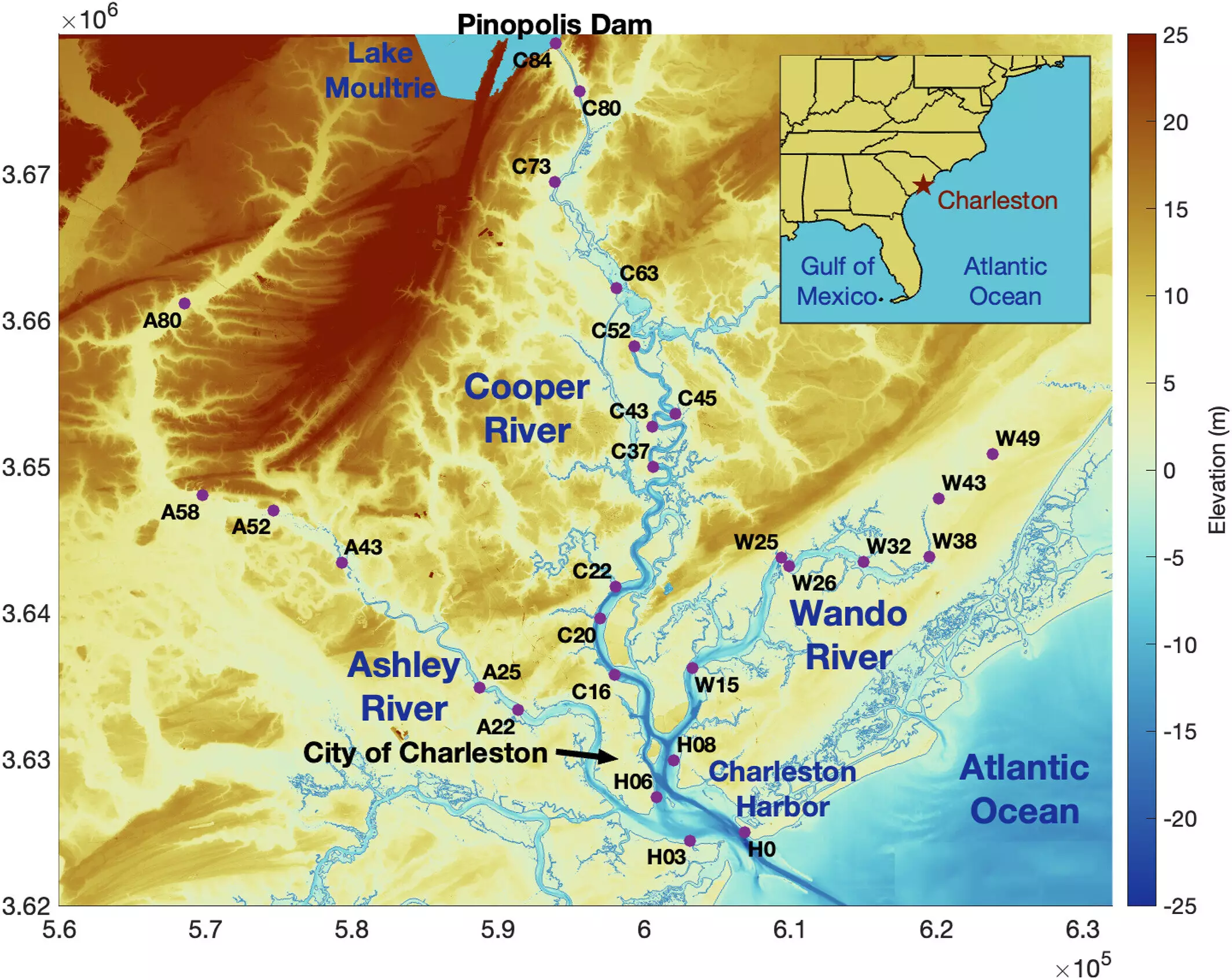Coastal engineering projects, particularly dam construction, have long been regarded as effective solutions for flood mitigation. However, a recent study published in the Journal of Geophysical Research: Oceans has called this assumption into question. The research indicates that while the intention behind building dams in coastal estuaries is to reduce flooding risks, the actual outcomes can be paradoxical, potentially exacerbating the very problem they aim to solve. This article explores the implications of the study, utilizing insights from the research to understand both the environmental and infrastructural complexities at play.
Estuaries serve as critical zones where fresh river waters meet the saline waters of the ocean, creating unique interactions that influence both ecosystems and human activities. According to lead author Steven Dykstra, many people operate under the assumption that storm surges diminish as they progress inland. However, the configuration of estuarine basins, particularly their funnel-like shape, can lead to heightened flood occurrences when combined with man-made structures like dams. This distorted perspective is crucial for policymakers and coastal planners, as it challenges the conventional wisdom regarding flood management.
The study focused on Charleston Harbor, South Carolina—an ideal case study due to the wealth of historical data available. Over a century’s worth of measurements revealed that the shape of the estuary significantly impacts how storm surge energy is transferred inland. When a dam is introduced into this natural setting, it can inadvertently compress the water flow, amplifying the storm surges rather than mitigating them.
Dykstra’s analogy of storm surges to “splashes in a bathtub” effectively illustrates the mechanics behind this phenomenon. Just as creating waves in a bathtub can lead to water sloshing over its sides, the addition of a dam modifies the dynamics of water movement within the estuary. Storm surges can “reflect” off these artificial barriers, causing them to build in intensity rather than dissipate as they journey inland. This critical interplay between hydraulic engineering and natural water flow patterns represents a complex relationship that often leads to unintended consequences.
Furthermore, findings from the study did not merely apply to Charleston but extended to 23 other estuarine systems throughout varying geographic locales, including Alaska’s Cook Inlet. The researchers employed computer modeling to analyze these diverse estuary systems, confirming that dam-created changes in the basin’s shape directly correlate to the strength and impact of storm surges and tides. This emphasizes the need for a broader understanding of how infrastructural developments can alter ecological and hydrological landscapes.
One particularly alarming revelation from the study is that the influence of coastal dams can extend well beyond immediate neighborhoods. Flooding is a problem that can disproportionately affect communities situated far inland, exposing vulnerabilities that may not be apparent until disaster strikes. In Charleston, for example, severe storm surges have been recorded over 50 miles from the coastline, challenging residents’ perceptions of their vulnerability to coastal influences.
The phenomenon is exacerbated by climate change-related sea-level rise, which serves to further entwine the fates of coastal and inland communities. As flooding events become more unpredictable and intense, individuals far removed from estuaries may need to reassess their risk levels. The study, therefore, presents a compelling case for a re-evaluation of both local urban planning and broader coastal management strategies.
This study’s implications underscore a critical necessity for integrating environmental science with urban planning in coastal regions. As global warming continues to reshape our coasts and elevate sea levels, fostering a more nuanced understanding of how human infrastructure interacts with natural systems becomes imperative. Policymakers must consider the long-term effects of dams and other similar structures on flood dynamics.
Ultimately, the goal of improving community resilience against flooding cannot simply rely on traditional methods; it requires innovative approaches that are informed by ongoing research and a commitment to adaptive management. The challenge lies not only in mitigating flooding but also in anticipating the broader consequences of our infrastructural decisions, ensuring both communities and ecosystems thrive in an era of uncertainty.

